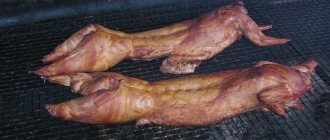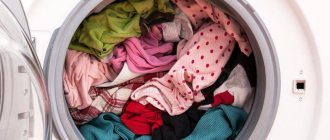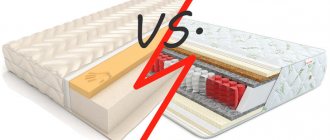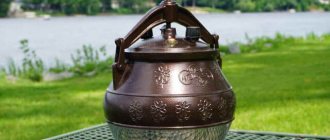| Place | Name | Characteristics in the rating |
| The best fillers for baby pillows |
| 1 | Buckwheat husk | The best natural filler |
| 2 | Silk | High quality |
| 3 | Bamboo fiber | Most popular filler |
| 4 | Latex | Long service life |
| 5 | Synthetic foam | Affordable price. A light weight |
| The best manufacturers of children's pillows |
| 1 | Askona | Best quality |
| 2 | Liena | Comfortable use |
| 3 | Espera | The best combination of price and quality |
| 4 | BioPillow | High reliability |
| 5 | BioSon | Eco-friendly and hypoallergenic |
Similar ratings:
- 10 Best Tips for Choosing an Orthopedic Sleeping Pillow
With the birth of a child and as he grows, every caring parent tries to organize the right sleeping place for him. A pillow is one of its most important components, because the baby spends a lot of time sleeping. Its main function is to support the head and neck in a physiologically correct position. A suitable model must be natural, hypoallergenic, have the correct size and have an orthopedic effect. The anatomical position of the body throughout the night ensures morning vigor, correct posture and complete deep sleep.
The choice of a particular pillow depends not only on the quality, but also on the age of the child. If the size does not match it, the baby will simply roll off at night and sleep without it. Frequently sleeping without support will lead to sagging necks, tense muscles and poor sleep. The rating we have developed will help you choose the best pillow and suitable filling for children 1-5 years old.
What to look for when choosing
Very young children do not need a pillow. But at what age is it time to use it? Pediatricians answer: from 2 years. At this point, the main curves of the spine are formed, and the cervical spine needs support. After 6-7 years, you can put your child to sleep on a regular, “adult” product.
But you need to remember your child's needs. If he doesn’t want to sleep on the pillow, slides off it, or even turns over in the crib, then you don’t need to force him. When a 1.5-year-old baby tries to build a pillow from his blanket, it means it’s time to give it to him.
There are a number of requirements for any product for children. After all, babies are still growing, their bodies are developing, and they are more susceptible to allergies than adults. Therefore, pillows must be of very high quality.
When choosing a pillow for your baby, you need to pay attention to the following nuances.
- How safe are the materials used for manufacturing? Don't chase low prices. Perhaps the manufacturer skimped on fabric or used toxic dyes.
- Breathability. This characteristic is important both for newborn babies and older children. The little ones will be able to breathe even if they bury themselves in a pillow. And older toddlers will have less headaches.
- The product should not be too soft. If you press on it, it should restore its shape.
- The size of the pillow should be chosen according to the age of the baby. The standard option is 40*60. These are the types of pillowcases that are most often included in children's bedding sets. If you choose a pillow with other parameters, then you need to immediately take care of the pillowcases. Orthopedic products have other sizes.
- Acceptable shapes are rectangle or square. Products in the form of cute animals or letters are suitable only for decoration.
- A pillow for a 2-year-old child should be carefully sewn, with even seams.
- A product intended for a baby must withstand washing well without losing its original appearance. It’s good if it has a zipper that allows you to wash the cover separately.
What should a baby pillow be like?
The basic rule for choosing a children's pillow is that it should be rectangular, low, small and moderately hard.
Colorful decorative items in the shape of letters, hearts and animals are only suitable for decorating a nursery, but not for a comfortable and healthy sleep.
The basic rule for choosing a children's pillow is that it should be rectangular, low and moderately hard.
It is important to ensure that only the child's head and neck rest on the pillow, and that the shoulders rest on the mattress, both in the supine and side-lying positions. To do this, the length of the pillow is chosen so that it is convenient to place the child’s head and neck on it (30-40 cm), and the width should not exceed the width of the bed (40-60 cm). The height (thickness) is selected in accordance with the length of the child's shoulder. For a one-year-old baby, it usually does not exceed 3-4 cm, and by 3 years it increases to 5-6 cm, so as the baby grows up, the pillow will have to be changed to a higher one.
A pillow that is too soft and unable to maintain its shape contributes to weakness and instability of the cervical spine. Sleeping on it will not be comfortable, the child will wake up sleep-deprived, with neck pain and will quickly get tired during the day. Sudden dizziness and attacks of nausea are also possible.
In addition, children's pillows must be:
- elastic;
- hypoallergenic;
- breathable;
- safe;
- absorbs and evaporates moisture well;
The filler is responsible for all of the above properties. Let's look at which filling is best for a baby pillow.
Pillows for children under one year old
It is often difficult for adults to imagine how it can be comfortable to sleep without a pillow. However, they forget about the physiological characteristics of babies. The head of a newborn is quite large in relation to the body; in adults this proportion is different. Therefore, no matter how the child lies - on his side, stomach or back - his spine and neck are at the same level.
Moreover, for very young children, the pillow can be dangerous. After all, they still don’t know how to turn or do it poorly. They can bury themselves in it and suffocate. Miss Clean magazine recommends removing all foreign objects, including soft toys, during sleep. Instead of a pillow, you can place a folded diaper under the baby's head. It will absorb moisture if the baby burps or sweats. You can also raise the head of the crib slightly so that your head is slightly higher than your body.
If parents are of the opinion that such a product is still necessary, then they should consider options suitable for the little ones.
- Inclined pillow. The effect from it is the same as from a slightly raised mattress. The baby's shoulders and head should be placed on the pillow. This product is convenient for children who are prone to frequent regurgitation, as well as during colds. In such cases, a runny nose bothers babies less.
- A special pillow that prevents suffocation. It is made of special materials that allow air to pass through. Even if the baby buries his nose in it, nothing bad will happen. It also has a shape that is absolutely safe for the newborn’s spine.
- Orthopedic pillow. In appearance it resembles a butterfly, in its middle there is a recess for the head. It is necessary for torticollis and some other problems, in such cases it is prescribed by doctors. It is also used to prevent deformation of the skull bones, for example, when the baby likes to lie in a certain position.
Such products are convenient to use until the child reaches six months. After this age, babies begin to have better control over their bodies; they confidently roll over, and later sit and crawl. Toddlers rarely sleep in one position; they move all over the crib. Therefore, the pillow often ends up out of use.
We recommend: How to choose a comfortable mattress for a double bed that suits both?
An interesting strategy for choosing a pillow for a baby
Doctors do not agree on the healing properties of orthopedic products, and many medical professionals recommend not using them for sleep, only for short rest.
Choosing pillows for a children's bed experimentally is the most effective, since a person has an individual physique. If you lie down right in the store, then you can say for sure that the parameters are suitable. Thus, you can choose a pillow for an infant.
What characteristics should be
The requirements for the product depend on the cover and filling, because these are the materials that make up a child’s pillow. Each of them has its own properties, the presence of which is desirable. Recommended case specifications:
- non-marking;
- easy to wash;
- gentle, soft, pleasant;
- without impurities of unknown origin.
There are much more requirements for fillers, because restful sleep and the absence of negative consequences in the future depend on their quality. Soft baby pillows are not a suitable option, because their rigidity is not enough to support the head. Characteristics for fillers:
- be environmentally friendly;
- do not cause an allergic rash;
- have sufficient rigidity;
- pass air currents;
- absorb moisture and evaporate it well.
Why is it so important to choose the right baby pillow?
A pillow that is unsuitable in shape, size and type of filling can cause many diseases associated with the spine. To restore it, long-term treatment will be required: massage, therapeutic exercises, wearing a special orthopedic collar, taking tablet medications. In childhood, when the spine is like plasticine and can bend in a month, this is especially true. Here are just some of the consequences of an incorrectly selected pillow:
- pain in the forearms, neck, trapezius muscles;
- scoliosis;
- early development of cervical osteochondrosis;
- headache;
- fast fatiguability.
In adulthood, untreated childhood illnesses get worse, so the choice of a baby pillow affects not only the baby’s health at the moment, but also what it will be like in the future.
Safe synthetics
When choosing a pillow for a child, you should not discard the idea of buying a product with a synthetic filler. True, in this case only the following materials are suitable:
- Polyurethane foam and synthetic winterizer are known for their hypoallergenic properties. They are often used in the manufacture of orthopedic models. Odorless, breathable.
- Artificial swan down containing silicone fibers is also suitable for children prone to allergic reactions.
- Lyocell is considered a “breathable” and at the same time durable material. It is easy to wash and clean.
- Latex is known for combining both synthetics and foamed natural rubber sap. Such pillows are very elastic, so they easily “adjust” to the contours of the child’s body. They do not require special care, are not susceptible to dust mites, and are durable. The material meets all the requirements for models of this class.
A child’s sound and healthy sleep means peace and tranquility for the whole family.
If a mother rocks her baby to sleep all night, who will take care of him and the whole family during the day?
And a dad who is tired at work, who walks around the room like a zombie at night with a child in his arms... But he has to get up in the morning and go earn money! For healthy children's sleep, lifestyle, nutrition, temperature in the room, and, of course, the best friend of children's dreams - a comfortable pillow! Let us remind you that choosing a pillow for a child is a responsible matter, because the baby spends almost half of his life sleeping. The newborn sleeps most of the time, taking only short breaks for snacks. The older the baby gets, the less time he sleeps, and the more important sleep becomes. Sleep is necessary to “turn on” vital functions - the production of growth hormone, activation of T-lymphocytes (the main immune factor), processing and assimilation of information. No wonder the proverb “Sound sleep is the key to health”
You need to choose the right pillow for your baby
Having studied the huge assortment of modern stores, we can name three main qualities of an ideal children's pillow:
Naturalness
Pediatricians are convinced that synthetics are the enemy of children's health. Firstly, it accumulates static electricity, which negatively affects the state of the nervous system. Secondly, synthetics are not ventilated and do not breathe, and therefore children sweat a lot in their sleep. The danger also lies in the fact that on the basis of this symptom, the diagnosis of “rickets” is often mistakenly made, with treatment prescribed, which in this case is unnecessary. All you need to do is replace the pillow. Today, several natural fillers are used: feather down, buckwheat husk, bamboo fiber.
Hygienic and hypoallergenic
They go hand in hand, because the most common cause of allergies is house dust, or rather, parasites that feed on it. Many mothers have already abandoned down pillows, because they are inhabited by feather mites, whose excrement is the most dangerous allergen. Synthetic pillows, as it turns out, are not a solution either. The main disadvantage of all soft pillows is a favorable environment for the proliferation of parasites - heat and humidity. Washing solves the problem for a short time - only the adults die, the eggs survive, and the number of parasites quickly reaches its previous levels. From this point of view, pillows with plant filling are safe - it breathes, is ventilated, such a pillow contains neither food for parasites nor comfortable conditions for their reproduction, it does not accumulate dust and is easy to care for. We suggest paying attention to bamboo and buckwheat pillows.
Orthopedic effect
The main function of the pillow is to support the neck and head in a physiologically correct position. If you sleep without a pillow at all, your neck sags and your muscles don’t rest. On a high pillow, the neck is unnaturally bent, the blood vessels and airways are compressed. A low pillow that molds to the shape of your body and supports it throughout the night is ideal. The correct position of the body during sleep contributes to the formation of correct posture, makes sleep calm and sound, and rest is complete. The most popular pillows around the world today are those with vegetable filling – buckwheat husk. It meets all three conditions for an ideal baby pillow. Husk is a natural material, clean, hygienic and hypoallergenic, has a pronounced orthopedic effect - it takes the shape of the body and retains it throughout the night.
How to choose the right pillow size?
When choosing a size, the age of the child is important.
From birth to 2 years, pediatricians recommend a flat pillow made of natural materials. The size should correspond to the width of the crib so that the child does not “jump off” the pillow while tossing and turning. At this age, the baby often sleeps on his stomach, and the pillow should allow air to pass freely so that when he buries his nose, he can breathe. Pay attention to the pillow with buckwheat husk, it copes with this task perfectly. An excellent option for a low pillow is “Nepoteyka”. It was developed by the mother of a newborn girl specifically for children from birth to one year. This is a thin quilted pillow filled with buckwheat husks. Freely passing air and ventilating, “Nepoteyka” guarantees that the baby will always be cool and comfortable! From 2 to 7 years old, the ideal pillow size is 50x40 cm, height no more than 10 cm. It is necessary to pour out excess filling from the pillow and adjust the height that is comfortable for your child.
For children over 7 years old, an “adult” pillow measuring 60x40 is suitable; the height must be selected individually by adding filler. The pillow should form a hollow under the head, and a cushion under the neck. The main criterion is a straight spine while sleeping both on your back and on your side.
At what age does a child need a pillow?
Orthopedic doctors most often oppose pillows in infancy. In the period after birth, a natural curve of the spine is formed - however, this requires a natural horizontal position without any differences in height. For the first months of life, it is recommended to place the child on a perfectly flat, hard mattress without a pillow. Therefore, young parents do not have to think about whether their child needs a pillow without appropriate medical advice.
Today, manufacturers often offer so-called orthopedic butterfly pillows - models of the appropriate shape with a recess in the middle. Such products are used to prevent torticollis, in cases of hypertonicity of the neck muscles, as well as to correct other similar problems. If the child does not have health problems, such pillows should not be used without consulting an orthopedist.
By the age of 1.5-2 years, it’s time to think about choosing a suitable pillow. Some children at this age attend kindergarten, so it is necessary to ensure that both at home and in the garden the bedding is fully consistent with the child’s health and habits. Next, the pillow will have to be changed as it grows - approximately every 3 years.











